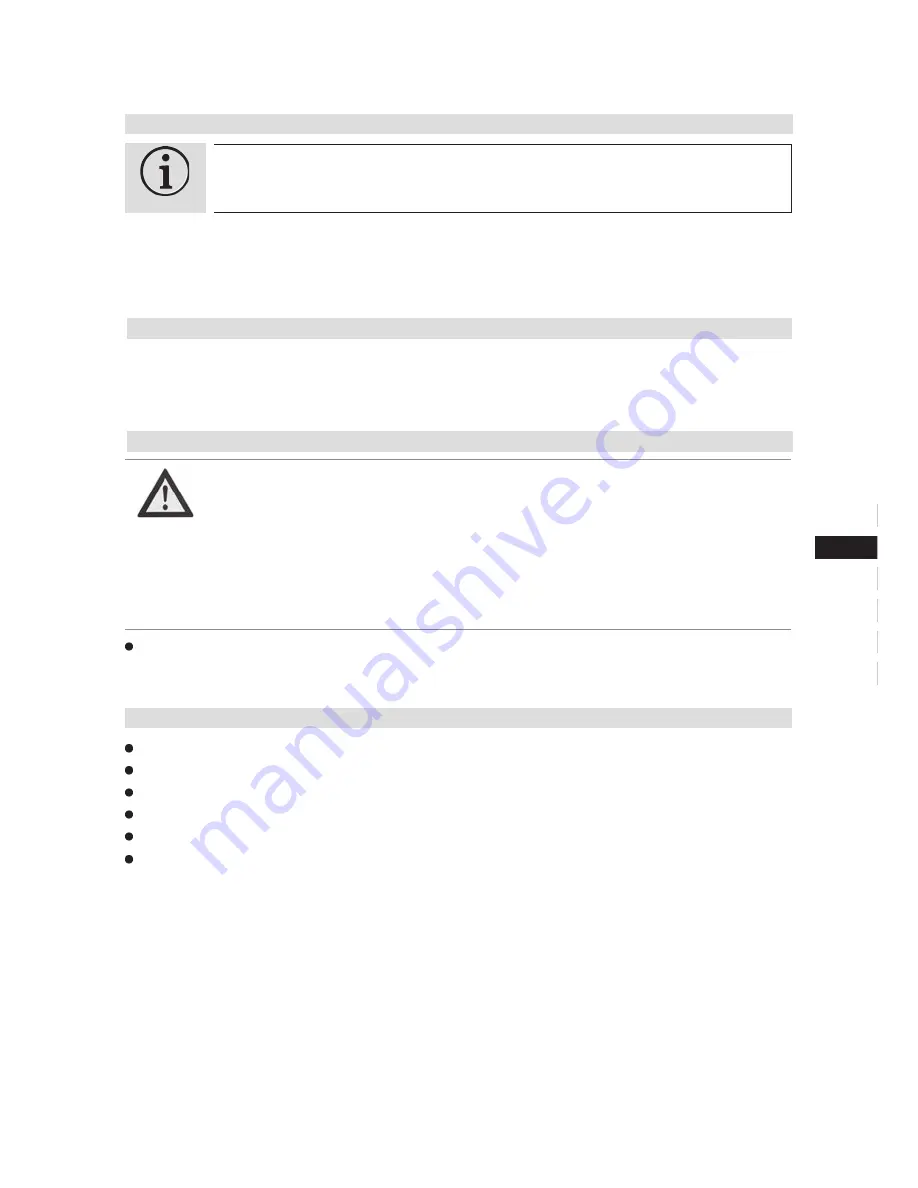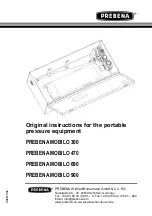
15
09704-06.2016-DGbFIT
rCn
D
GB
F
I
TR
CN
5
|
Commissioning
5.1 Preparations for start-up
5.4 Evacuation
First evacuate the
system
and then include
the compressor in the evacuation process.
Relieve the compressor pressure.
Open the suction and discharge line valves.
Evacuate the suction and discharge pressure sides using the vacuum pump.
At the end of the evacuation process, the vacuum should be < 1.5 mbar when the pump is switched off.
Repeat the process as often as is required.
INFO!
To protect the compressor against inadmissible operating conditions,
high-pressure and low-pressure pressostats are mandatory on the
installation side.
The compressor has undergone trials in the factory and all functions have been tested. There are
therefore no special running-in instructions.
Check the compressor for transport damage!
5.3 Leak test
Carry out the leak test on the refrigerating plant in accordance with EN 378-2 or a corresponding
safety standard, while always observing the maximum permissible overpressure for the compressor.
DANGER
Risk of bursting!
The compressor must only be pressurised using nitrogen (N
2
).
Never pressurise with oxygen or other gases!
The maximum permissible overpressure of the compressor must
not be exceeded at any time during the testing process (see name
plate data)! Do not mix any refrigerant with the nitrogen as this
could cause the ignition limit to shift into the critical range.
5.2 Pressure strength test
The compressor has been tested in the factory for pressure integrity. If however the entire system is
to be subjected to a pressure integrity test, this should be carried out in accordance with EN 378-2
or a corresponding safety standard
without the inclusion of the compressor.












































